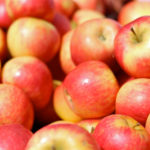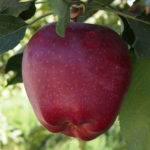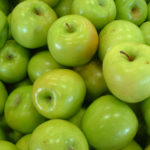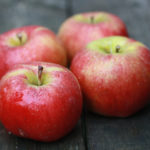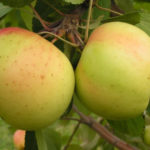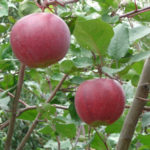Apple variety Good news
Growing apple trees in the Urals is not easy due to difficult climatic conditions and frequent outbreaks of diseases. Relatively short and cool summers, long and cold winters - all this plays against heat-loving crops. But, in general, an apple tree is a rather persistent tree, and thanks to the efforts of breeders, qualities that increase its value are instilled in it - winter hardiness and high immunity. In 2004, the Ural Federal Agrarian Research Center of the Ural Branch of the Russian Academy of Sciences submitted an application for registration of a new variety with the optimistic name Good News. In the same year, the novelty was entered into the State Register of Breeding Achievements of Russia in the Volga-Vyatka region, which includes the Kirov, Nizhny Novgorod, Sverdlovsk regions, Perm Territory, the Republic of Mari El, the Udmurt and Chuvash Republics. As a parent form, the author of the new variety L.A. Kotov used an apple tree, which is quite common in the Urals. Beauty of Sverdlovskby crossing it with the X-2034 immune form. From the parent, the Good News inherited not only a bright appearance, but also excellent characteristics.
Do not confuse our heroine with another variety - Blagovest. Despite the consonant name, it is an independent species, zoned in the Central Black Earth Region.
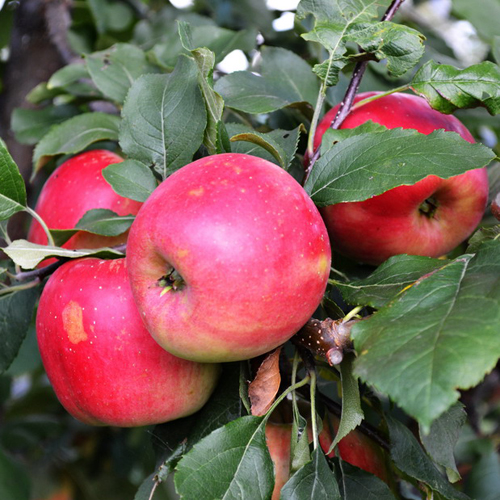
Description
The tree grows and forms rapidly, the size is slightly above average - about 3.5 meters. The height depends on the stock. On the seedling rootstock, the tree grows to its maximum size, on semi-dwarf ones - to a more modest height, close to the average parameters - about 2 meters. The crown is highly oval, well filled, but not too dense. Thin geniculate shoots are compact, medium in size, brown bark, pubescent. Lentils are light, medium-sized, well-arranged. The leaves of the apple tree are small, oblong, elliptical, smooth, dark green. The leaf blade of the Good News bends slightly along the central vein, has a serrated edge. The petiole is of normal length and thickness, with minor traces of anthocyanin coloration.
The fruits of the variety are very bright, regular rounded or neatly chiseled high in shape. The funnel is deep, not wide, may have small traces of rustiness. The peduncle is strong, not too long. Shallow saucer, half-open cup. The skin is firm, but harmoniously combines with the pulp. The main color is greenish-yellow, the integumentary color in the form of a purple blush covers most of the fruit. The subcutaneous points are medium, grayish, inconspicuous, in small quantities. The pulp is of medium-dense consistency, juicy, fine-grained, chipping type. Nice cream color. The taste is good, sweet and sour, the aroma is weak. The average assessment of the tasters is 4.5 points. Apples are leveled in size, not too large, with an average weight of 85 - 95 grams. In rare cases, it is possible to harvest large apples weighing about 200 grams.
Characteristics
- During the fruiting period, the Good News enters in the middle period, 4 - 5 years after planting;
- apple blossoms occur in the second decade of May;
- in terms of ripening, the variety belongs to the late winter. The harvest period begins at the end of September. Consumer maturity - in the first decade of October;
- the yield, according to experts and gardeners, is average, but stable. There are no official data on this information, but some sources give a figure of up to 20 kg from a young plant and about 35 - 40 kg during the period of active fruiting;
- the average life span of a tree is about 35 years;
- winter hardiness of this apple tree is slightly higher than that of Krasa Sverdlovsk. According to some reports, the Good News can easily withstand frosts of -30 ° C, but lasting for a short time. According to observations carried out in the winter period of 2016 - 2017 (North-West region, Yaroslavl region), when the temperature in December dropped to -32 ° C, then in early January there was a thaw of up to + 3 ° C, and the absolute minimum was recorded 7 January - up to -39 ° С, no visual freezing was found on the tree, and in June the leaf apparatus developed normally;
- drought resistance of the variety is excellent. Thanks to a well-developed root system, the apple tree is able to extract moisture in the deep layers of the soil;
- immunity is quite high. The culture has resistance to all 5 scab races recorded in the Urals. Therefore, spraying against the fungus is carried out only in epiphytic years. But the culture still needs protection, primarily from pests - leafworms, aphids, moths;
- according to reviews, our heroine has a fairly high degree of self-fertility. But still, it does not hurt to plant a variety next to the Good News that blooms at the same time as it. This will have a positive impact on the quality of the apple harvest;
- ripe fruits on the branches hold firmly, do not fall off;
- the transportability of the fruits of this variety is quite high. But nevertheless, you should be careful during harvesting, apples should be carefully packed into containers for transportation or storage;
- the keeping quality of the variety is excellent. Fruits harvested at the stage of technical ripeness without loss of presentation and loss of taste can lie until spring, and even longer. The term for fruit consumption by the originators is announced until May. Gardeners also confirm good keeping quality, according to their observations, by March 8, the fruits of the Good News have no visible damage, the taste does not change;
- the way of use is universal. The late winter variety will be an excellent vitamin support in the winter when apples are used in their natural form. Also, the crop can be successfully processed into jam, jam, pie filling.
Planting and leaving
It is advisable to purchase one- or two-year-old seedlings. The best time to plant the Good News in the admission region is spring. But you need to be in time before the start of sap flow in the tissues of the plant, so choose a fine day in April, when the snow cover has already melted. But if the autumn is warm and humid enough, planting can be done 2, or better 3 weeks before the onset of stable cold weather. Choose a well-lit, level plot. It is advisable to refuse planting in lowlands and pits. If the site is heated, plant the apple tree on an artificial hill, at least 50 cm high. Suitable soils are fertile, loose loam or sandy loam. Young trees, especially those planted in spring, need good watering. Adults moisturize as needed during dry periods. Top dressing is carried out with both mineral and organic fertilizers. Preventive spraying against pests is mandatory. Formative pruning is carried out in the first 4 years, then thinning and sanitary pruning.
The good news deserves attention and respect from gardeners. Despite the fact that the variety is new, it is considered promising. Its main advantage is excellent immunity to scab, moreover, immediately to 5 races, and this is a very useful quality in adverse weather conditions. The yield of the apple tree, although low, is stable from year to year, and the productive life of the tree is high. Our heroine is an ideal candidate for long-term storage of fruits, in addition, the crop can be used universally. Self-fertility, drought resistance and frost resistance are an excellent combination for fruit crops. But the variety is also not deprived of shortcomings.The plant will have to be regularly protected from pests, in case of unfavorable weather conditions the apples may become smaller, the taste qualities may not be to the liking of lovers of sweet fruits, besides, the aroma of apples is very weak.
